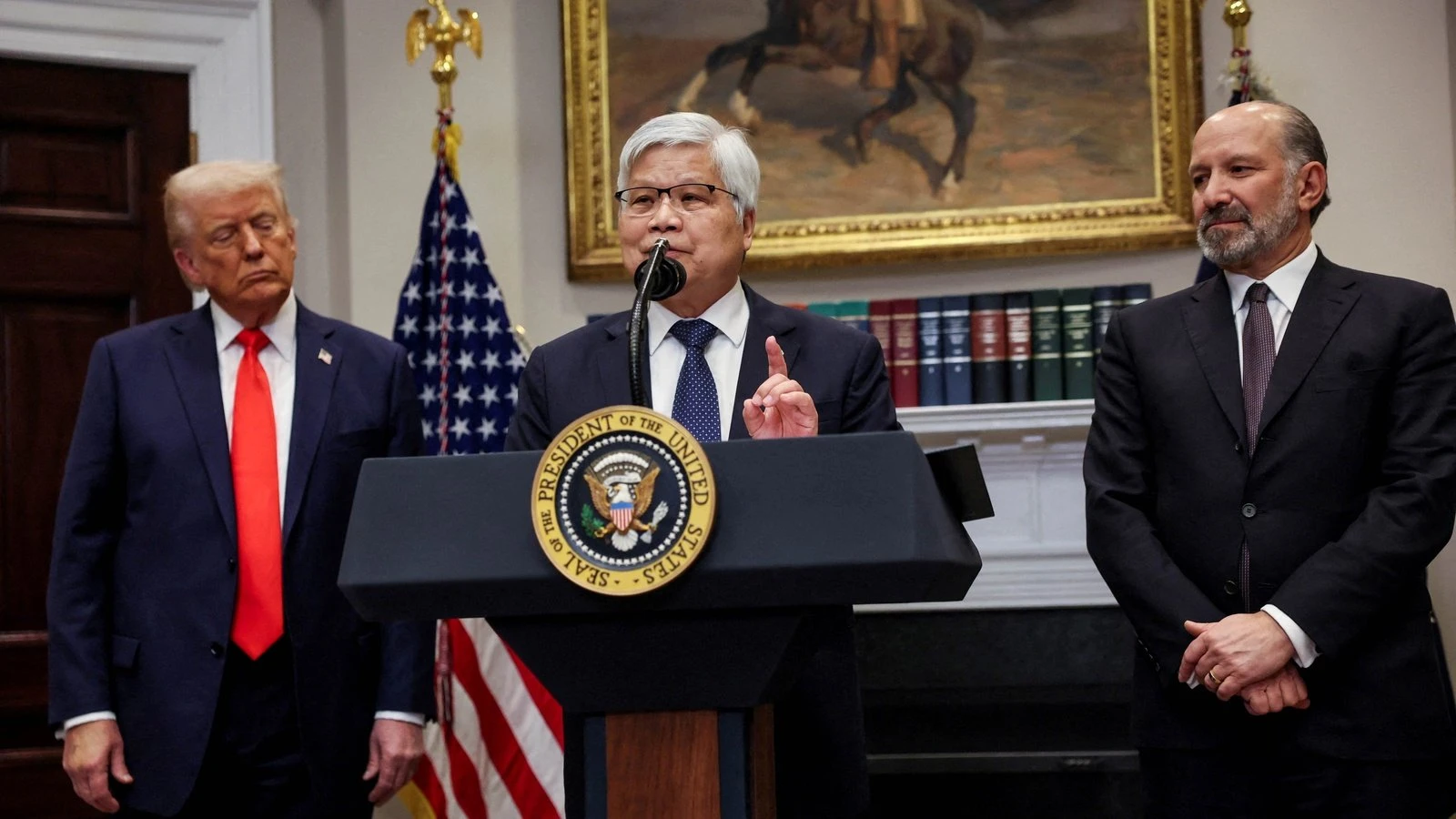Diversity Think Tank: Inclusion matters – here’s why you should care
It has long been said that an organisation’s greatest asset is its people. Employees are the driving force behind innovation, customer engagement, revenue growth, and company culture. In an era where political, social, and economic climates are in constant flux, particularly with ongoing debates surrounding diversity, equity and inclusion, it is more critical than ever for organisations to recognise the value of an inclusive workforce.
There is a well-known saying: “When America sneezes, the rest of Europe catches a cold.”. It rings particularly true today, as shifts in political and social climates challenge the notion of diversity programmes. This is evident in the recent ruling by the UK Supreme Court that the legal definition of a woman is based on biological sex. However, history has shown that political regimes and societal norms can change rapidly. Regardless of where one stands on these issues, the reality remains that for an organisation to thrive, its people must feel valued, supported, and included.
Despite the growing focus on DEI programmes since 2020, many past initiatives have not been as effective as hoped. To move forward, the DEI industry and DEI professionals must conduct a rigorous retrospective analysis: What has worked? What hasn’t been effective? How can we improve? Without tangible metrics and data-driven insights, it becomes difficult to measure the success and impact of these initiatives, and this lack of clear outcomes may have contributed to what some define as the “backlash against DEI.”
A common challenge has been the prioritisation of diversity over inclusion, leaving organisations ill-prepared to integrate diverse talent effectively. This has often resulted in short-term disruption - what change management refers to as the "storming" phase of team development - which in turn has led to team friction, a lack of belonging, and ultimately higher turnover rates among underrepresented employees. Organisations have not allowed enough time for teams to progress to the "norming" and "performing" periods in the face of high pressure to deliver results.
To counter this, organisations must shift their mindset to focus on inclusion and belonging first. When a workplace fosters an inclusive culture, diverse talent is naturally welcomed, supported, and empowered to succeed. Rather than viewing differences as an obstacle, businesses must embrace them as strengths that drive innovation and growth. I often advocate for culture “add” rather than culture “fit”.
As a former project and programme manager who transitioned into HR, I have witnessed firsthand the value of applying change management principles to DEI efforts. A successful change programme requires clearly defined goals, strong leadership buy-in, stakeholder engagement, a structured delivery methodology, and measurable outcomes. When these elements are absent, initiatives tend to falter. By adopting a structured, results-oriented, and data-driven approach, organisations can embed true inclusion into their core business strategy rather than treating it as a secondary initiative or a “nice to have”. It’s also important to regularly assess and reflect on what has worked, what hasn’t, and adapt and improve accordingly. In agile methodology, we call these retrospectives.
Inclusion is key to successful DEI initiatives. In the past, these efforts may have created exclusion by failing to involve those who do not identify with the Equality Act's nine protected characteristics. This has led to defensiveness and fear instead of an understanding of historical inequity. When you are accustomed to privilege, equality can feel like oppression or exclusion and so we need to focus on how we can reframe inclusion work as being beneficial to all rather than to a few. Using storytelling, education, and relatability helps onboard more allies, understanding that equity is crucial to achieve equality. Inclusion means widening opportunities for everyone rather than limiting them to a select few.
A wealth of research underscores the positive impact of inclusivity on business success. According to CIPD, 70% of employees report that a strong DEI culture positively impacts their job satisfaction. Forbes also discovered that 88% of consumers are more likely to be loyal to a company that supports social and environmental causes.
Additionally, employees working in inclusive environments are 50% more likely to stay with their current employer for more than three years. Just over half of UK consumers say a brand's diversity and inclusion efforts, influence their purchase decisions. In fact, brands failing to act on Diversity, Equity and Inclusion risk losing out on £102bn annual spend from marginalised groups. Boston Consulting Group’s research demonstrates that organizations with diverse leadership see 19% higher innovation revenues.
Beyond traditional meritocratic arguments, one principle is clear: inclusivity must be at the heart of every business strategy. Organisations where employees feel seen, heard, and valued naturally attract a broader, more diverse talent pool. Such employees tend to be more engaged, loyal, and productive, further strengthening the organisation's overall success and their bottom line.
The UK tech industry is poised for continued growth and innovation, with a focus on emerging technologies like AI and quantum computing, however there is also a need to address challenges like talent shortages and international competition to maintain its position as a global leader. Almost 95% of employers looking for tech talent have encountered a skills shortage in 2022, according to HR and recruitment firm Hays.
In today’s job market, competitive salaries alone are not enough to attract and retain top talent. Employees now prioritise benefits, flexible working arrangements, career growth opportunities, and a sense of belonging. Organisations that prioritise inclusion, equal opportunities, and adaptability will be better positioned to navigate the evolving talent landscape and sustain long-term success.
Ultimately, fostering an inclusive workplace is not merely a moral obligation; it is a business imperative. Companies that prioritise inclusion are more likely to attract top diverse talent, enhance employee engagement, and drive sustainable growth. Companies that fail to create inclusive environments are setting themselves up for failure. We are seeing more and more cases of sexual harassment, bullying and discrimination cases with high price tags. So, whether through loss of business, bad publicity or legal consequences, the price tag on exclusion can be staggering.
Inclusion should not be seen as a separate HR initiative but as an integral part of an organisation’s DNA with all leaders owning an inclusion goal as part of their performance management. What gets measured, gets done! However, this can only happen if leaders and managers understand what inclusion truly means and they recognise that a diversity of voices, experiences and opinions will benefit their teams rather than hinder them.
The future of work is about more than just employment—it is about providing opportunities for people to live, support their families, and achieve personal and professional growth. A poll, conducted by Ipsos for PA Mediapoint, indicates widespread support among the British public for key workplace DEI drives, including flexible working, gender pay gap reporting, and inclusivity training. People care about wellbeing, inclusion and culture, which is why it is so important that organisations create workplaces where everyone is valued, empowered, and given the chance to succeed. True prosperity comes from ensuring that every individual, regardless of background and differences, can flourish. So, Inclusion does matter, particularly if you value creating a positive work environment that benefits employees, impacts the bottom line, and ensures everyone feels included rather than excluded.
about DEI in tech
A lack of work-life balance and discrimination are among the biggest challenges for women in tech, finds Lorien
When asked their opinions on the growing use of AI, girls expressed concerns about possible biases it will perpetuate, while boys were worried about cyber security
#diversity #think #tank #inclusion #mattersDiversity Think Tank: Inclusion matters – here’s why you should care
It has long been said that an organisation’s greatest asset is its people. Employees are the driving force behind innovation, customer engagement, revenue growth, and company culture. In an era where political, social, and economic climates are in constant flux, particularly with ongoing debates surrounding diversity, equity and inclusion, it is more critical than ever for organisations to recognise the value of an inclusive workforce.
There is a well-known saying: “When America sneezes, the rest of Europe catches a cold.”. It rings particularly true today, as shifts in political and social climates challenge the notion of diversity programmes. This is evident in the recent ruling by the UK Supreme Court that the legal definition of a woman is based on biological sex. However, history has shown that political regimes and societal norms can change rapidly. Regardless of where one stands on these issues, the reality remains that for an organisation to thrive, its people must feel valued, supported, and included.
Despite the growing focus on DEI programmes since 2020, many past initiatives have not been as effective as hoped. To move forward, the DEI industry and DEI professionals must conduct a rigorous retrospective analysis: What has worked? What hasn’t been effective? How can we improve? Without tangible metrics and data-driven insights, it becomes difficult to measure the success and impact of these initiatives, and this lack of clear outcomes may have contributed to what some define as the “backlash against DEI.”
A common challenge has been the prioritisation of diversity over inclusion, leaving organisations ill-prepared to integrate diverse talent effectively. This has often resulted in short-term disruption - what change management refers to as the "storming" phase of team development - which in turn has led to team friction, a lack of belonging, and ultimately higher turnover rates among underrepresented employees. Organisations have not allowed enough time for teams to progress to the "norming" and "performing" periods in the face of high pressure to deliver results.
To counter this, organisations must shift their mindset to focus on inclusion and belonging first. When a workplace fosters an inclusive culture, diverse talent is naturally welcomed, supported, and empowered to succeed. Rather than viewing differences as an obstacle, businesses must embrace them as strengths that drive innovation and growth. I often advocate for culture “add” rather than culture “fit”.
As a former project and programme manager who transitioned into HR, I have witnessed firsthand the value of applying change management principles to DEI efforts. A successful change programme requires clearly defined goals, strong leadership buy-in, stakeholder engagement, a structured delivery methodology, and measurable outcomes. When these elements are absent, initiatives tend to falter. By adopting a structured, results-oriented, and data-driven approach, organisations can embed true inclusion into their core business strategy rather than treating it as a secondary initiative or a “nice to have”. It’s also important to regularly assess and reflect on what has worked, what hasn’t, and adapt and improve accordingly. In agile methodology, we call these retrospectives.
Inclusion is key to successful DEI initiatives. In the past, these efforts may have created exclusion by failing to involve those who do not identify with the Equality Act's nine protected characteristics. This has led to defensiveness and fear instead of an understanding of historical inequity. When you are accustomed to privilege, equality can feel like oppression or exclusion and so we need to focus on how we can reframe inclusion work as being beneficial to all rather than to a few. Using storytelling, education, and relatability helps onboard more allies, understanding that equity is crucial to achieve equality. Inclusion means widening opportunities for everyone rather than limiting them to a select few.
A wealth of research underscores the positive impact of inclusivity on business success. According to CIPD, 70% of employees report that a strong DEI culture positively impacts their job satisfaction. Forbes also discovered that 88% of consumers are more likely to be loyal to a company that supports social and environmental causes.
Additionally, employees working in inclusive environments are 50% more likely to stay with their current employer for more than three years. Just over half of UK consumers say a brand's diversity and inclusion efforts, influence their purchase decisions. In fact, brands failing to act on Diversity, Equity and Inclusion risk losing out on £102bn annual spend from marginalised groups. Boston Consulting Group’s research demonstrates that organizations with diverse leadership see 19% higher innovation revenues.
Beyond traditional meritocratic arguments, one principle is clear: inclusivity must be at the heart of every business strategy. Organisations where employees feel seen, heard, and valued naturally attract a broader, more diverse talent pool. Such employees tend to be more engaged, loyal, and productive, further strengthening the organisation's overall success and their bottom line.
The UK tech industry is poised for continued growth and innovation, with a focus on emerging technologies like AI and quantum computing, however there is also a need to address challenges like talent shortages and international competition to maintain its position as a global leader. Almost 95% of employers looking for tech talent have encountered a skills shortage in 2022, according to HR and recruitment firm Hays.
In today’s job market, competitive salaries alone are not enough to attract and retain top talent. Employees now prioritise benefits, flexible working arrangements, career growth opportunities, and a sense of belonging. Organisations that prioritise inclusion, equal opportunities, and adaptability will be better positioned to navigate the evolving talent landscape and sustain long-term success.
Ultimately, fostering an inclusive workplace is not merely a moral obligation; it is a business imperative. Companies that prioritise inclusion are more likely to attract top diverse talent, enhance employee engagement, and drive sustainable growth. Companies that fail to create inclusive environments are setting themselves up for failure. We are seeing more and more cases of sexual harassment, bullying and discrimination cases with high price tags. So, whether through loss of business, bad publicity or legal consequences, the price tag on exclusion can be staggering.
Inclusion should not be seen as a separate HR initiative but as an integral part of an organisation’s DNA with all leaders owning an inclusion goal as part of their performance management. What gets measured, gets done! However, this can only happen if leaders and managers understand what inclusion truly means and they recognise that a diversity of voices, experiences and opinions will benefit their teams rather than hinder them.
The future of work is about more than just employment—it is about providing opportunities for people to live, support their families, and achieve personal and professional growth. A poll, conducted by Ipsos for PA Mediapoint, indicates widespread support among the British public for key workplace DEI drives, including flexible working, gender pay gap reporting, and inclusivity training. People care about wellbeing, inclusion and culture, which is why it is so important that organisations create workplaces where everyone is valued, empowered, and given the chance to succeed. True prosperity comes from ensuring that every individual, regardless of background and differences, can flourish. So, Inclusion does matter, particularly if you value creating a positive work environment that benefits employees, impacts the bottom line, and ensures everyone feels included rather than excluded.
about DEI in tech
A lack of work-life balance and discrimination are among the biggest challenges for women in tech, finds Lorien
When asked their opinions on the growing use of AI, girls expressed concerns about possible biases it will perpetuate, while boys were worried about cyber security
#diversity #think #tank #inclusion #matters















